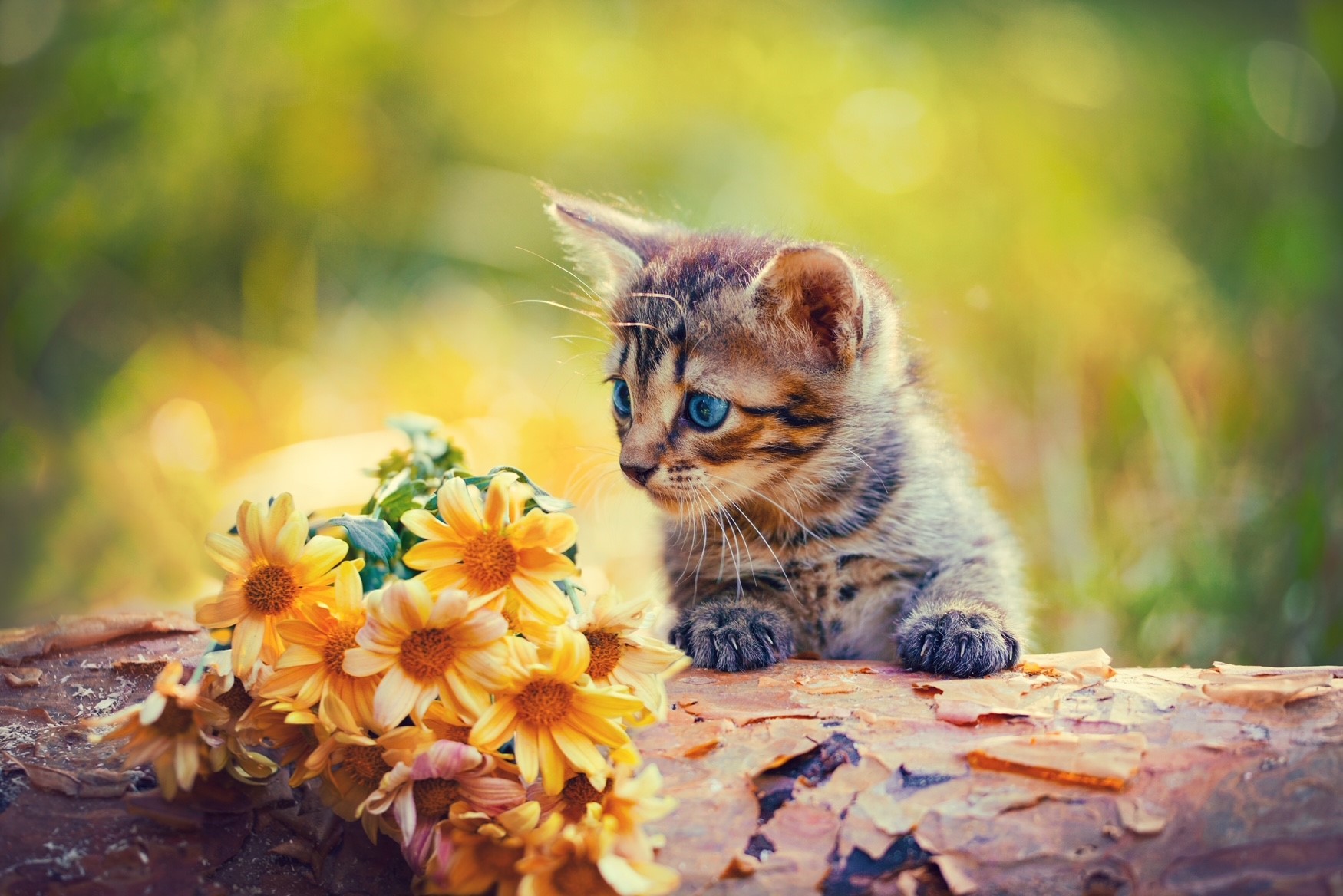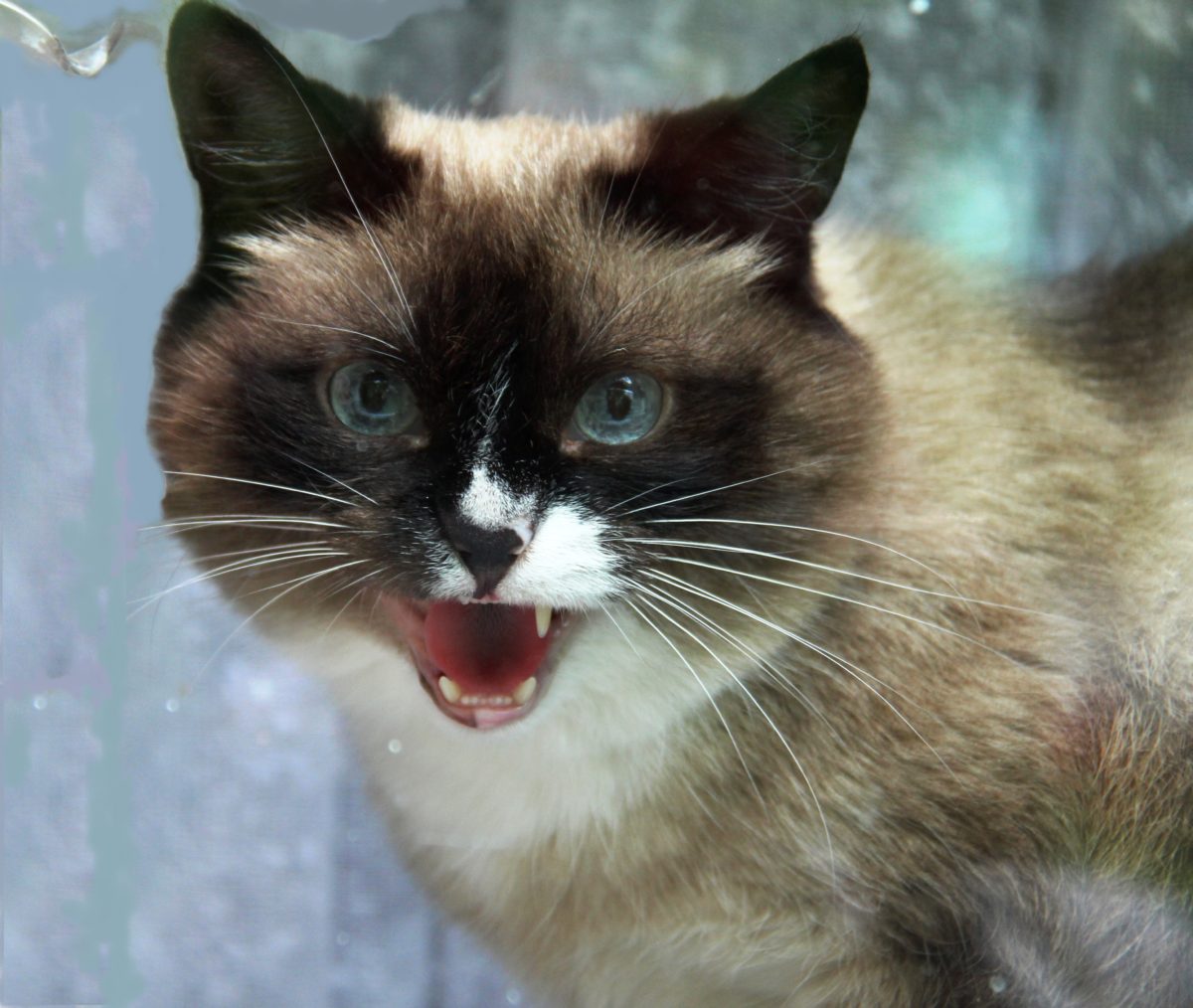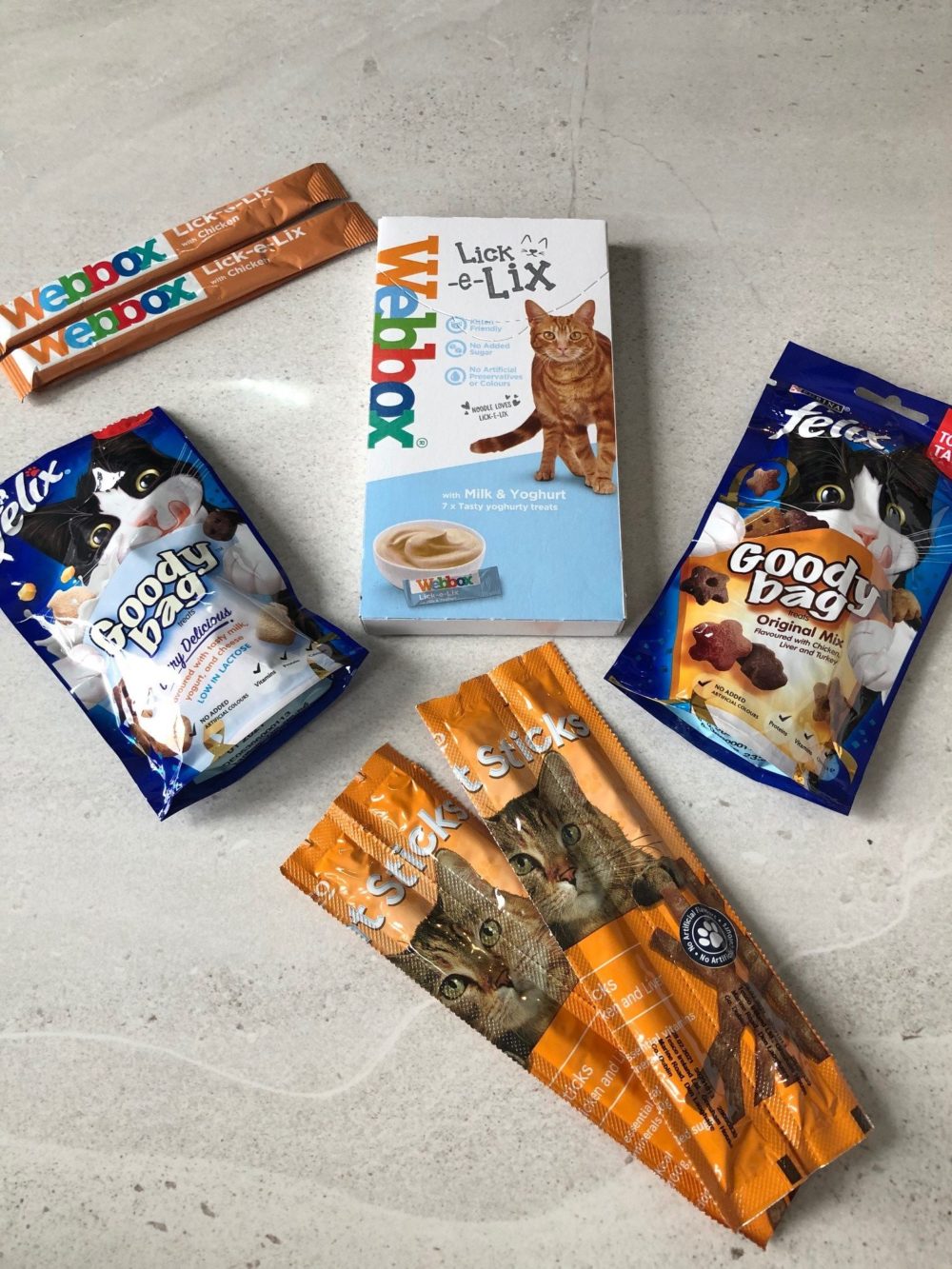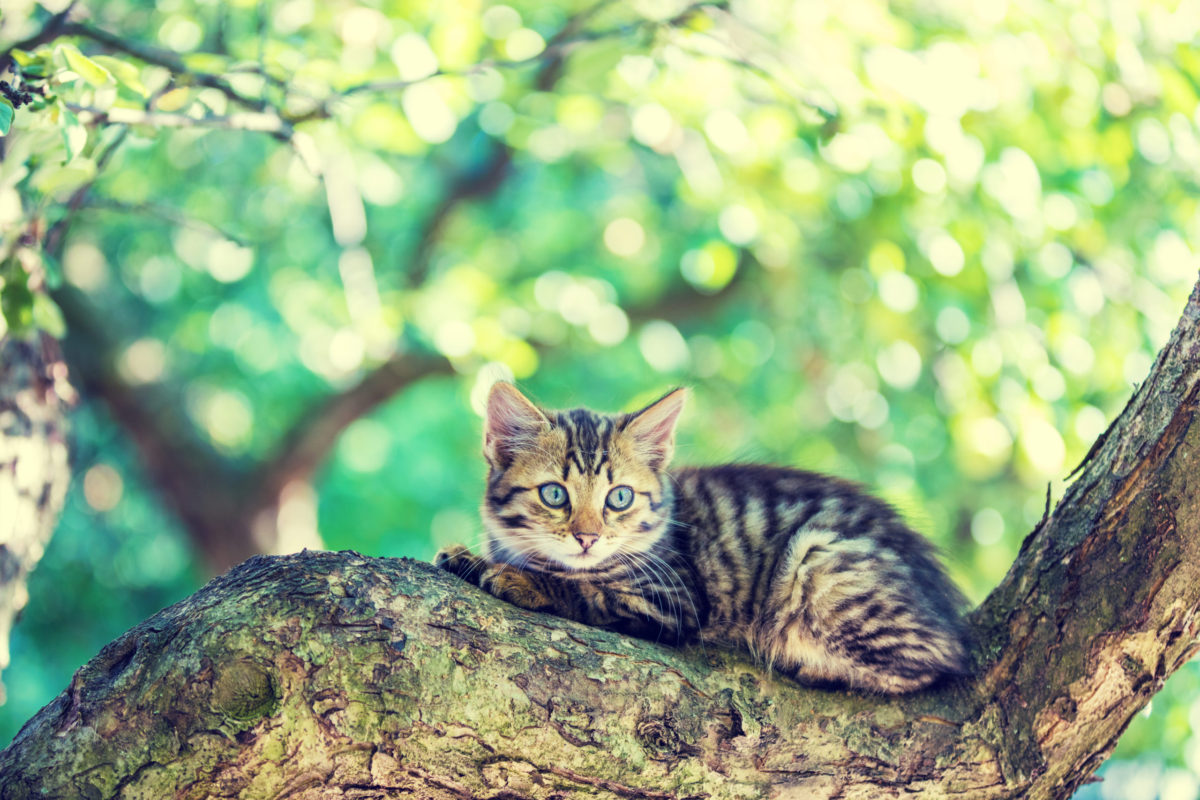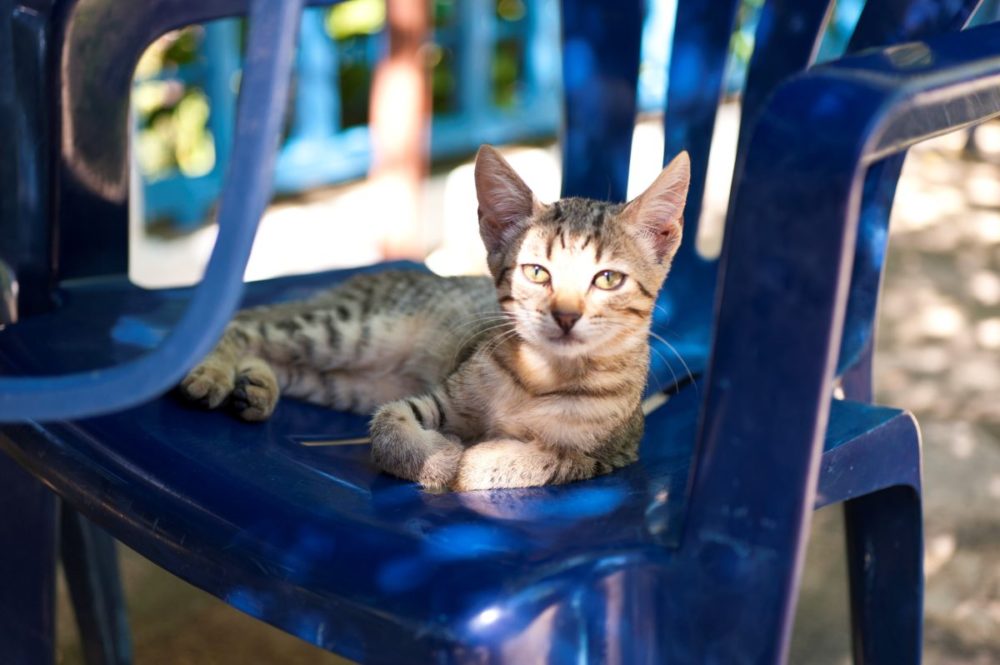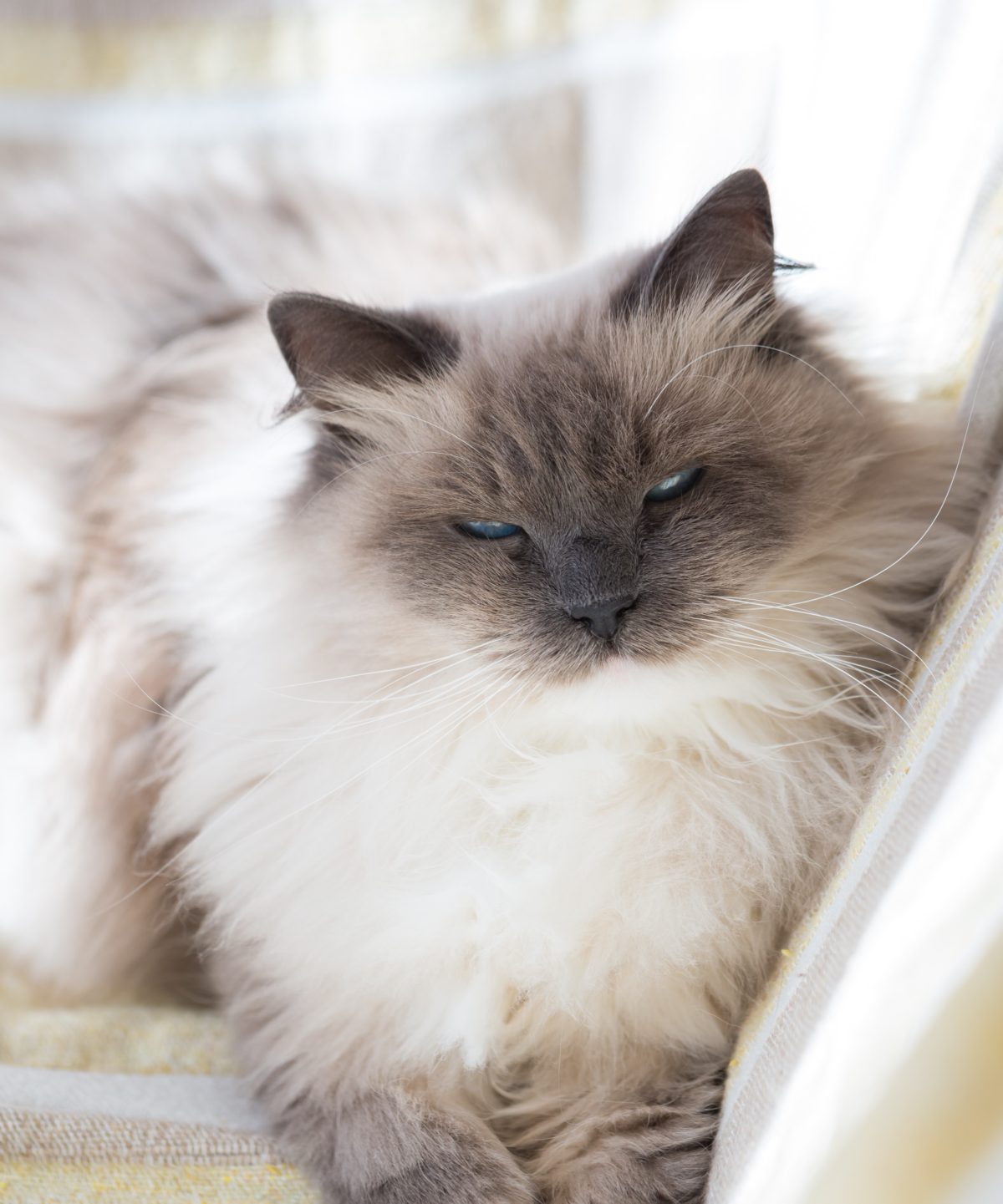
How to keep your cat happy – 10 key factors
What makes a cat happy? What do our feline friends need to ensure they are as fulfilled and contented as can be? Whether you are about to welcome a new cat to your family and need to familiarise yourself with what’s needed, or you are already have a cat member in your family and need to check they have everything they could possible need, then this article will help you through the check list.
1. A healthy balanced diet
Feeding your cat good quality food, in the right quantities, is very important for the health and wellbeing of your cat. There are so many food options available, it can be difficult to decide what is best to feed them. Choose good quality cat food and ensure it is suitable for your cat’s age. There are recommended amounts on the manufacture’s packaging, but these are only guidelines. Obesity is a common problem in cats and care is needed not to overfeed. Many of the foods we eat are actually harmful to cats, some can be fatal therefore stick to food especially formulated for cats.
Our cats love some tasty cat treats, but it is so easy to over indulge your cat on these. Choose good quality treats and treat them as treats – a little, and not too often! The problem of overweight cats is increasing and over indulgence on treats can be one of the causes (along with lack of exercise and high calorie diets). Experts recommend treats should not be more than 10% of your cat’s calorific daily intake.
If you are unsure about any aspect of your cat’s diet please do not hesitate to contact your veterinary for advice, they will be happy to help you.
2. Fresh water
Every living thing on earth needs water. Just like the humans, if cats do not ingest enough water, they may become severely dehydrated therefore water is essential to your cat’s health. It can be difficult to know how much water your cat should drink because water consumption depends on several factors, including the size of your cat, the time of the year, and whether your cat’s diet includes wet or dry cat food. Dry food varies between 8 and 10% moisture whilst canned food can include up to 80% water therefore if your cat eats wet canned food then desired water intake is much more easily achieved.
Ensure your cat always has access to fresh water. Try water bowls of different shapes, sizes, and material to see what your cat prefers. Change the water in the bowl daily and rinse it thoroughly each time. Keep water separate from food as many cats don’t like the water too close to their food. If your cat seems to prefer fresh running water, try a pet water fountain. For further information on the importance of water and tips on how to get your cat to drink more check our article ‘How much water should my cat drink’.
3. Health check and prevention of diseases
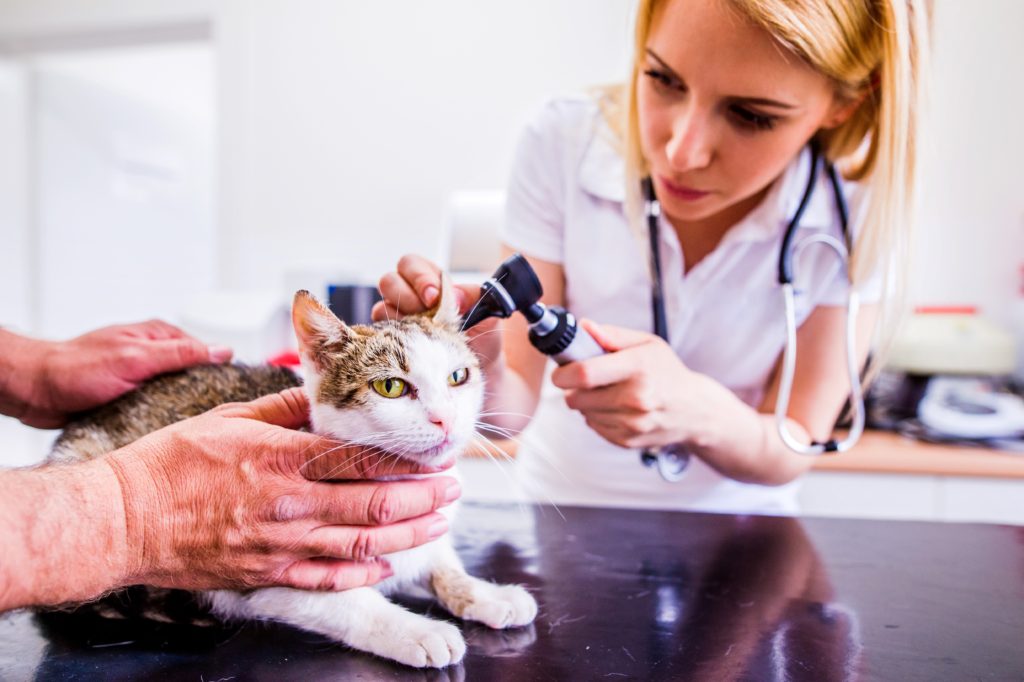 Prevention is better than cure and an annual check-up for your cat with your veterinary will ensure all is well and any problems can hopefully be caught early. A healthy cat will be a happy cat. They can advise you on a regular flee and worming treatment and of any vaccinations needed.
Prevention is better than cure and an annual check-up for your cat with your veterinary will ensure all is well and any problems can hopefully be caught early. A healthy cat will be a happy cat. They can advise you on a regular flee and worming treatment and of any vaccinations needed.
To prevent unwanted pregnancies, and to lower the risk of feline HIV, your cat should be neutered. It is a quick and safe procedure; your veterinary will be able to recommend how and when is best for your cat.
It is highly recommended to microchip your cat; the vet can do this. If your cat wanders off or gets lost, particularly cats that are allowed to wander outside, they can then be traced back to you when found.
Any changes in your cat’s behaviour or appearance, for example, weight loss, lethargic, aggression, should be checked out as soon as possible.
4. Clean environment
Cats are naturally very clean animals. They groom regularly, keeping their coats in a pristine condition. Having a clean environment is an important factor in ensuring your cat is happy and a clean litter box will satisfy your cat’s need for cleanliness. Your cat will soon let you know it the location of the litter box is not to her liking. A large litter box in a well lit but quiet part of the house works for most cats. If the area is too dark, noisy or secluded they may avoid using the litter box.
Clean the litter box at least once a day, preferably more often. If you have more than one cat you will need to provide multiple litter boxes. If you are experiencing problems with your cat and litter box usage, check out our article ‘8 common litter box problems’ for suggestions on how to rectify the problems. Always consult your veterinary if you notice any sudden changes in your cat’s litter box behaviour or you are concerned in any way.
5. Interaction and stimulation
Spending time with your cat will benefit you both and many believe that it’s this connection between owner and pet is the key to keeping your cat happy. The bond and trust between you will grow as you spend more time together and you will get to know more and more of your cat’s likes and dislikes. There will be times in the day when your cat will be full of energy and want to play, then times when they will seek some quiet time, and this is perfect for some cuddling and stroking.
Quiet time
Cats do enjoy a quiet, calm atmosphere, away from loud noises. Cats have very sensitive hearing, this is key to their hunting skills, but it does mean that noises are amplified. Use this quiet time to have your cat sit on your knee and enjoy some stroking. Always stroke your cat from head to tail. Do not go against the line of the fur as most cats’ dislike this. Pay extra attention to under their chin, behind their ears, rubbing their neck & massaging their cheeks. These spots will have your cat purring with delight. Your cat will soon let you know when they’ve had enough.
Playtime
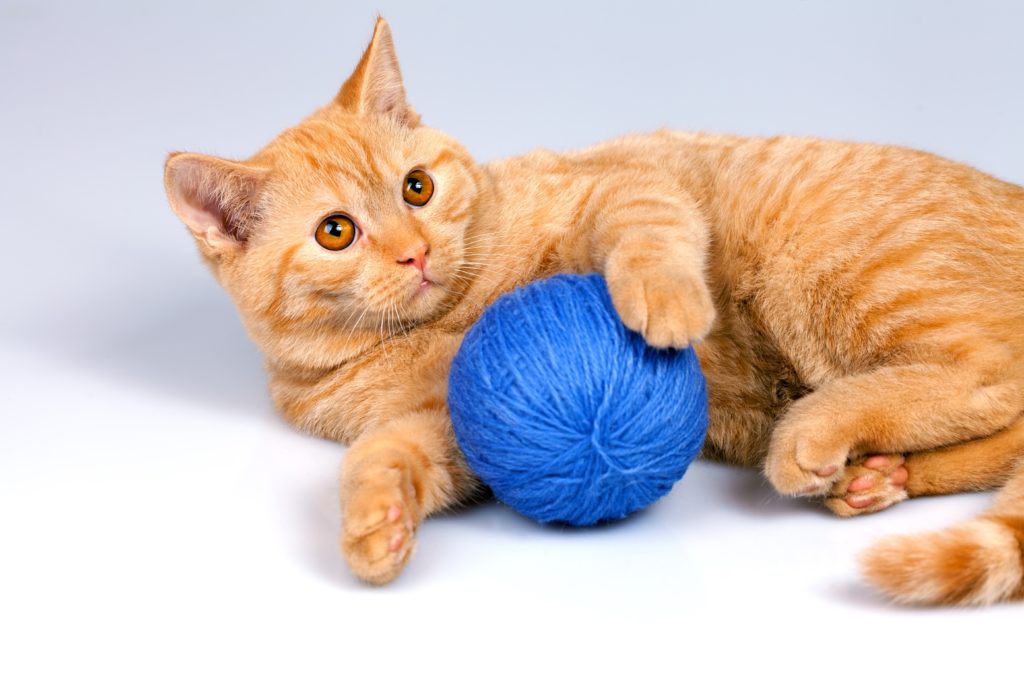 What better way to spend 15 minutes twice a day than having fun playing with your cat? Both indoor and outdoor cats need to be provided with a stimulating and safe indoor environment. But it is particularly important for indoor cats to be entertained and to have their natural instincts satisfied. Spending a little time every day playing games with your cat will boost your relationship and is a great way to get to know and understand each other better. Some cats just don’t like to be picked up or stroked but may be more than happy to spend a little time having fun playtime. Other benefits of play time with your cat includes:
What better way to spend 15 minutes twice a day than having fun playing with your cat? Both indoor and outdoor cats need to be provided with a stimulating and safe indoor environment. But it is particularly important for indoor cats to be entertained and to have their natural instincts satisfied. Spending a little time every day playing games with your cat will boost your relationship and is a great way to get to know and understand each other better. Some cats just don’t like to be picked up or stroked but may be more than happy to spend a little time having fun playtime. Other benefits of play time with your cat includes:
- Exercise for your cat, keeping bones and muscles strong and healthy and keeping obesity at bay
- It can be a great tool for helping two cats to get along and become friends
- Build the trust between you and your cat
- Playtime for your cat is just as important as feeding and keeping them safe and warm. Playtime relieves stress, anxiety and behavioural problems. We have lots of ideas for fun and easy games for you to try out ‘18 games to play with your cat’ as well as a list of factors to consider when playing and choosing toys for your cat.
- A great favourite with most cats is the toy wand with a feather or toy attached to the end of the string. You can make the toy move and be hidden just like a prey, your cat will enjoy chasing and jumping on the toy. Try to move the toy to mimic real life movements of a prey. A wind-up toy is great too, wind them up, watch them race off on their own with kitty in hot pursuit. There are even remote-control mouse toys suitable for cats on the market too. Cats can rarely resist anything that dangles or moves so anything tied to a piece of string – a colourful feather, a cork or even a ball of paper – can create a great prey catching playtime. Allow your cat to be successful in catching her toy prey, this will build her confidence, avoid frustration and build on trust.
6. Indoor access and surroundings
Whether your cat is an indoor or outdoor cat it is important to ensure that your cat’s indoor surrounding satisfy her natural instincts. A cat’s instincts include climbing, scratching and creating a territory. There are many easy ways to satisfy these instincts including:
- Add some cat shelves or a cat tree for easy, safe climbing. Cats thrive on being able to climb to higher levels for comfort, safety, exercise and playtime. Climbing onto a high perch can provide a safe haven, especially for a frightened cat. Her familiar smells on the cat tree will be comforting and it will be your cat’s own personal space. Cat trees can help maintain harmony in a multi-cat household too. The availability of a higher perch to display highest ranking position is a much more harmonious way to display ranking rather than fighting!
- View from a window. A cosy window ledge with a clear, large enough view of the outside world can be a cat’s live tv dream! Watching birds, squirrels and wildlife come and go can keep them amused for hours. Set up a bird feeding station near the window and you will have no concerns about nothing to watch! And in the right spot the warm sun can penetrate the window making it the perfect place for an afternoon nap too.
- When outdoors, some cats like to chew on grass. It is believed that it aids the removal of materials like fur which are not digestible, or can relieve constipation, and also provide some nutrients such as folic acid. Why not provide some potted indoor grass for your cat? To ensure the grass is suitable for cats, retailers sell specific cat grass. If your cat enjoys this, try to ensure you have a new plant ready when the old one needs to be replaced.
- An indoor cat will need a scratching post. Cats naturally need to scratch in order to maintain their claws and as a method of marking territory. Scratching posts are widely available or can easily be made. A post covered in rough fabric is perfect – ensure it is stable and allows your cat to fully stretch its body. Having one large scratching post along with a few smaller carboard scratchers will give your cat plenty of scratching options. This should satisfy your cat’s urge to scratch and protect your furniture.
- Ensure there are plenty of toys and activities to amuse your cat while you are away. Ensure the toys you leave out are safe – avoid anything with string, ribbon, yard or rubber bands. Smaller toys that can be carried in the cat’s mouth are great, as are toys with catnip. Puzzle toys and feeders are excellent for keeping cats amused. These feeders are designed to be moved and played with by the cat and will dispense treats or food.
- Bring the outdoors indoors. Introduce new sensations and scents by brining in some outdoor elements indoors for your kitty to enjoy. Some ideas can include:
- some dry crackling fallen leave
- a piece of fallen log
- some fresh snow
Access to their own space
Personal space is an important factor for cats. They do not need a room exclusively for them but do create a designated area specifically for your cat. This area should contain your cat’s food, water, bed, and a scratching post. Cats love to hide so providing a simple cardboard box or ensuring their cat bed is covered will satisfy their need for privacy. A hideaway in a secluded place makes them feel safe and secure and it’s likely this is where they will retreat to when feeling overwhelmed or a little scared.
7. Outside access

Deciding or whether your cat will be an outside or indoor cat can be a difficult decision. Many cat experts have varying views on this topic. We’ve dedicated an article to this issue which explores the advantages and disadvantages of both options. Funnily enough our two cats are so different in that Boo is an indoor cat whilst Misty goes out exploring in the day but is kept in overnight.
If having an indoor cat is the right option for you then there are ways you can still let them enjoy the fresh air and experience the outside senses:
- Build a catio. A catio is an outdoor enclosure for cats. A patio for cats! It’s a safe enclosure that allows your cat healthy exercise time and the enrichment of outdoor stimulation whilst protecting them from outside dangers such as cars and poisons. And the interest and trend for catios just keeps growing. Our catio build has been a huge hit with our cats. Read all about our catio build here. Some of the benefits of having a catio include
- Protects your cat from outside dangers such as poisons, vehicles, neighbouring cats and dogs.
- Provides fresh air, exercise and outdoor adventure in a safe protected enclosure.
- Reduce risks of injuries and diseases associated with outdoor cats.
- Peace of mind that your cat is safe all the time.
- The birds and wildlife in your garden are safe.
- Keeps your cat in their own back yard preventing them to wander into neighbouring gardens.
- If it’s large enough for a bench or garden chair the catio can be an area for you and your cat to enjoy together!
- Taking your cat for a walk on a leash. Our youngest cat, Boo, a nervous cat, enjoys little walks whilst on the safety of a lead. This is best introduced when your cat is a kitten. Get them used to the leash first, slowly but surely and build up to outside walks.
- Fence your back yard. If your back garden is cat-escape proof, then they can be let out safely to enjoy the fresh air.
Awareness of the changing seasons
More so for your outdoor cat, but still relevant for indoor cats, is to be aware your cat’s needs during the extreme weathers of the changing seasons.
In the winter months, exposure to cold temperatures for a long period of time can be as dangerous to cats as it is to humans. A good rule of thumb is that if it’s too cold for us humans then it is also too cold for a cat. Older cats and those with shorter hair will be more at risk than a young, healthy, long haired cat. A few key points in keeping your cat safe during the winter are:
- Ensure your cat has access to somewhere warm when outside like a garage or shelter
- Keep your cat indoors if the conditions are just too wintry to let your outdoor cat out
- Before setting off on your journey always check underneath your car and under the bonnet. Snuggling under a warm car bonnet may seem like the perfect warm hideaway for your cat.
- Check outside water has not frozen.
- In deep snow or blizzard conditions, the safest place for your cat is indoors.
- One of the biggest risks during the winter period for your cat is antifreeze poisoning. Antifreeze is extremely toxic to cats and can prove fatal if they ingest it. If cats ingest even a little amount of antifreeze it can kill them therefore it is critical to ensure that any spills on the driveway are cleaned up.
In contrast the extreme heat of the summer months can be potentially dangerous to cats too. Temperature above 21oC can begin symptoms of heat stress in cats. There are many ways in which we can make the hot weather safe and comfortable for our cats:
- Access to plenty of fresh cool water. Try adding ice cubes to the water to ensure it stays cool for longer.
- Get creative and make some cool cat treats for your cats to enjoy – a catsicle if an ice-lolly for a cat! You can be as creative as you like tailored to your cat’s favourite flavours!
- Cats will seek shade in the hot sun. Outbuildings, shrubs or even a specific cat shelter can be a haven from the sun’s rays.
- A cool breeze from an open window, or a fan can help keep the air circulating.
- And most importantly NEVER leave a cat, or indeed any animal, in a car on a hot day.
8. Keeping cat toys fun and interesting
Cats are natural hunters and can get bored easily. Therefore, when considering your cat’s happiness, feeding their curiosity and avoiding boredom will avoid problems and ensure a happy cat. Simply leaving the same toys out for your cat to play with can make them less interesting. Try some of the following tips to ensure your cat’s toys are played with and enjoyed.
- Rotating cat toys is a great idea – and simple too. By putting some away for a while, it’s like discovering new toys again when they reappear.
- Place toys in new location rather than just leaving in a corner. A crinkly toy mouse hidden under their blanket will ignite their senses and curiosity. Place one or two toys on their cat tree or placed in a higher position.
- Puzzle feeders are great but ensure they are filled with a few rewarding treats.
- Even bigger items, like a cat tree, can be moved to a new location for some variation.
9. Cat communication
 Have you ever wondered what your cat is trying to tell you? Ever wondered how they communicate with each other? Cats are excellent at expressing their feelings and communicating their emotions very clearly to each other, and to humans. By learning about the way cats communicate and observing your cat to understand your cat’s own communication habits and quirks, you can identify much better what your cat needs. It will also help to prevent misunderstandings and potential aggression. Cat language is a combination of tail position, facial expression, vocal and scenting messages. Looking out for certain pointers and clues can reveal many things that your cat may be trying to communicate.
Have you ever wondered what your cat is trying to tell you? Ever wondered how they communicate with each other? Cats are excellent at expressing their feelings and communicating their emotions very clearly to each other, and to humans. By learning about the way cats communicate and observing your cat to understand your cat’s own communication habits and quirks, you can identify much better what your cat needs. It will also help to prevent misunderstandings and potential aggression. Cat language is a combination of tail position, facial expression, vocal and scenting messages. Looking out for certain pointers and clues can reveal many things that your cat may be trying to communicate.
Cats communicate in a variety of different way, and using a mixture of the following senses, including;
- vocally,
- visually,
- in tactile ways and
- via scent.
Check out our article on ‘Cat Communication’ for an in-depth insight into the world of cat language.
Training and guiding your cat
When trying to train your cat, positive reinforcement is the absolute best method. Your cat will respond well to praise, treats as rewards, stroking – any positive response. Shouting and any form of angry interaction will not be understood by your cat, in fact it is likely to results in less trust and your cat wanting less interaction with you.
10. A feline friend
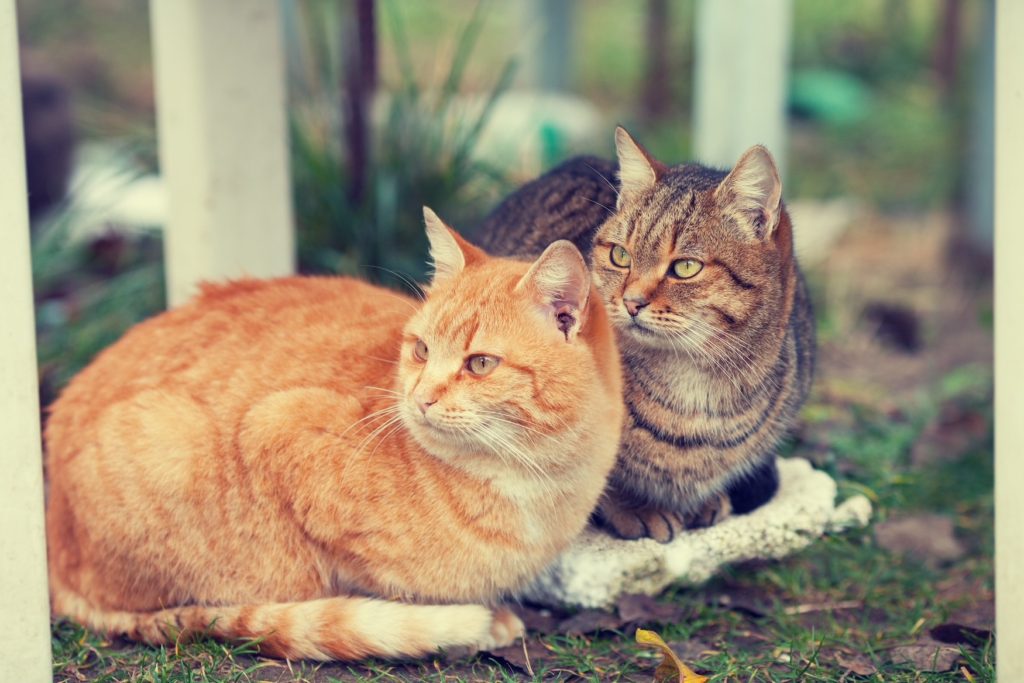 Some cat owners find that having more than one cat can be a blessing. They are company for each other and occupy one another’s time. This can be especially true if you are out at work most days and they are left home alone. Social interaction with other cats can certainly be an enriching experience to your cat’s life. Younger cats especially, will chase each other, be playful which keeps them amused and active too. If you do decide to introduce another cat member to your family, ensure the introduction process is slow and calm so they can get to know each other first. The younger the cats are when introduced the easier they will adapt to each other and become great companionship to each other. But even older cats can become friends, although there may be some reluctance in the form of hissing and fighting initially especially where one cat has been resident for some time. There are various tips to encourage them to tolerate, and in time, enjoy each other’s company, which include:
Some cat owners find that having more than one cat can be a blessing. They are company for each other and occupy one another’s time. This can be especially true if you are out at work most days and they are left home alone. Social interaction with other cats can certainly be an enriching experience to your cat’s life. Younger cats especially, will chase each other, be playful which keeps them amused and active too. If you do decide to introduce another cat member to your family, ensure the introduction process is slow and calm so they can get to know each other first. The younger the cats are when introduced the easier they will adapt to each other and become great companionship to each other. But even older cats can become friends, although there may be some reluctance in the form of hissing and fighting initially especially where one cat has been resident for some time. There are various tips to encourage them to tolerate, and in time, enjoy each other’s company, which include:
- using cat pheromones
- feeding them progressively closer
- rubbing them with a towel rubbed in the other one’s fur to encourage them to become accustomed to each other’s smells.
Conclusion
By observing your cat and becoming familiar with her likes and dislikes and following the key steps outlined above your cat will be a happy cat. An under stimulated cat can develop stress or anxiety related behaviour patterns which include over-grooming, isolation, over-eating or loss of appetite, destruction of inappropriate items or even self-mutilation. Cats were designed to move, to hunt, climb, scratch and be active and these natural instincts need to be nurtured.
A fun, safe, playful environment will result in a happy confident cat which is what all cat owners ultimately want. All this can be achieved, very simply and quickly and it doesn’t have to cost a lot of money either as we’ve seen.
Other articles you may find of interest:
Where should my cat sleep? Where do cats sleep outside?
Do I need to brush / groom my cat? An introductory guide
Creating the ultimate cat friendly garden – 10 top tips
30 fabulous reasons to own a cat
